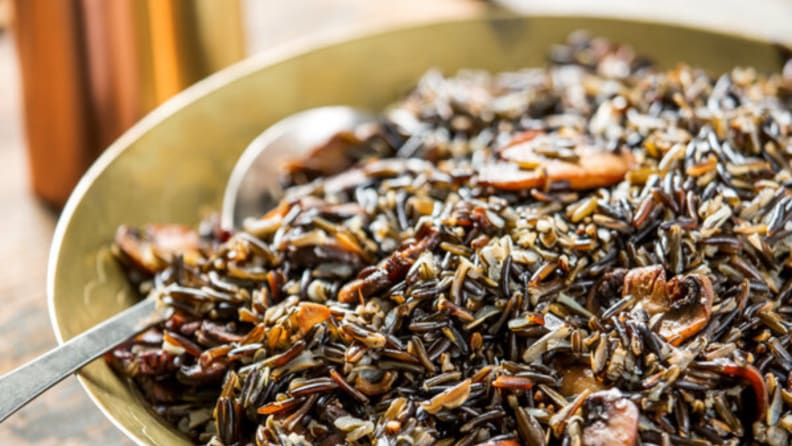Having trouble finding meat? Here are 7 ways to get protein without it
No meat, no problem.
Products are chosen independently by our editors. Purchases made through our links may earn us a commission.
As meatpacking plants are forced to close or reduce production because of the COVID-19 pandemic, shoppers may be experiencing shortages at their local grocery stores. As the ripples are felt down the supply chain, stores may also impose limits on the amount of meat you can buy at one time.
Some may worry about not consuming enough protein, which provides necessary nutrients for our day-to-day activities and keeps us feeling full longer. But there are a few protein-packed alternatives to try that can still satisfy your appetite.
1. Seafood
There’s never enough to be said about how great seafood is as a healthy, low-calorie source of protein. Although hunkering down at home and limiting shopping trips may restrain our abilities to access fresh seafood, you can actually have freshly caught seafood delivered to your doorstep. Plus, many fish are considered better for the environment and more sustainable than farmed meats.
Dinner idea: Garlic Butter Sheet Pan Salmon with Asparagus
2. Beans
I know, I know. There’s been enough talk about pantry items and you’re probably tired of making the same rice and beans over and over again. But there are multiple health benefits of getting beans into your regular meals because they’re nutritious, delicious, have a long shelf life, and help you feel full.
If you’re still stumped, the Vegans Beans From Around the World cookbook includes popular bean recipes from around the world.
Dinner idea: 3-Bean Healthy Chili
3. Quinoa and other nutritious grains

This wild rice dish takes a while to prepare but the result is delicious.
Vegetarians and vegans have long added high-quality grains into their diets to supplement protein in place of meat—quinoa, wild rice, and brown rice are all good sources of protein, among other nutrients that are essential to human bodies. If cooking rice is too daunting for you, you may want to consider getting a reliable rice cooker to help out, like our favorite Zojirushi Neuro Fuzzy Logic.
Dinner idea: Wild Rice with Mushrooms
4. Dairy- and soy-based products
As long as we don’t run out of dairy products, we probably don’t need to panic about not getting enough protein. In South Asia, where fresh milk was hard to come by before the invention of refrigeration, people came up with genius ways of making yogurt, paneer, and other types of cottage cheese to preserve the nutritional value in dairy products.
In East Asia, tofu and other soy-based products were the main source of protein before dairy became popular. You can either find them at the grocery store or make them at home with basic ingredients on hand.
Dinner idea: Vegan Mapo Tofu
5. Plant-based meat alternatives
When I had my first bite of a plant-based burger, I honestly didn’t believe that it wasn’t real meat—it was tender, juicy, and had all the characteristics of a quality beef patty. One of the leading companies behind the plant-based food trend, Beyond Meat, can now be found in most major grocery stores. Besides the amazing taste, these patties are high in nutritional value, as the label indicates 20 grams of protein per serving.
Dinner idea: Pasta with Beyond Meat Bolognese
6. Freezer-friendly vegetables
Although vegetables aren’t necessarily something many of us crave under quarantine, it’s important to keep in mind that some of them are great ways to obtain protein if we run out of meat. Vegetables like broccoli, peas, lentils, spinach, Brussels sprouts, cauliflower, artichoke, and bok choy are delicious and can be stored in the freezer for a long time.
Dinner idea: Roasted Brussels Sprouts with Garlic
7. Mushrooms
Once I visited a Buddhist vegetarian restaurant and my mind was blown away by the meat-like dishes that were made from various types of mushrooms. Some types of mushrooms, like shiitake and porcini, are high in protein and can add a depth of flavor to your dishes. If you don’t want to go outside to buy mushrooms, you can actually grow your own in your backyard.
Dinner idea: Mushroom and Garlic Spaghetti Dinner
Regardless of whether your nearest grocery store starts imposing meat limits, it’s always good to try out new ingredients and experiment with different ways to cook them. From pantry cooking to stay-at-home baking, we’re here to help you find fresh ideas to brighten up your dinner table.


